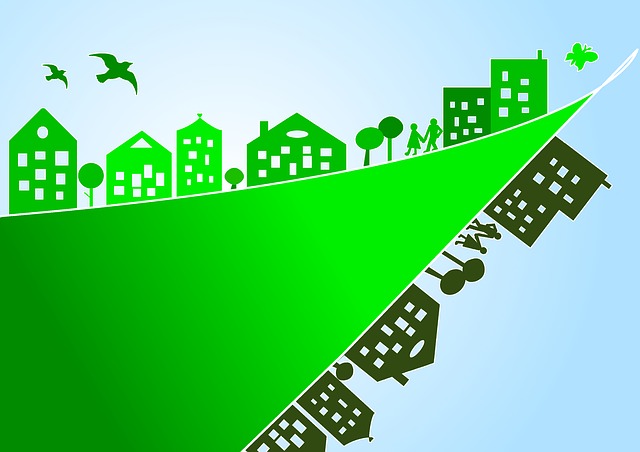A BREEAM Assessment is a certification system that helps you determine the sustainability of a building. It was created in 1990 by the Building Research Establishment and is now the world’s most established sustainability rating system. It aims to help architects, designers, and building owners understand the true sustainability potential of a building.
What Is A BREEAM Assessment?
A BREEAM Assessment certifies a building’s environmental performance. Developed by the Building Research Establishment, it is one of the most widely used sustainability rating systems. It helps designers and owners improve a building’s performance and efficiency while simultaneously reducing costs. The assessment is based on strict scientific guidelines and is conducted by an independent third party.
BREEAM is a widely recognized standard for green buildings and was initially developed in the United Kingdom by the Building Research Establishment (BRE). The BREEAM Assessment rating system takes into account many environmental factors, including energy efficiency. Since 1990, over 250,000 buildings have obtained a BREEAM assessment certificate, and more than a million have registered for assessment.
A BREEAM Assessment can be completed on new developments or refurbishment schemes. It is mandatory for most publicly-funded buildings. Each BREEAM criteria is multiplied by a weighting factor, and the overall score is calculated. It is then translated into an unclassified, good, or excellent BREEAM rating.
As a certification process, BREEAM takes into account a variety of environmental issues, which includes not only energy and water usage but also social and economic sustainability. BREEAM focuses on the lifecycle of a building, and the long-term impact of each factor is accounted for. The BREEAM Assessment certification process aims to help designers and owners build a more sustainable and resilient built environment.
How To Acquire A BREEAM Assessment?
If you are thinking of obtaining a BREEAM Assessment for a building project, you may be wondering how to go about it. The good news is that there are several different ways to do so. Firstly, you can hire an assessor. These professionals can carry out assessments of buildings and other assets and register projects with the scheme. They will also help you achieve scheme compliance through target setting and performance monitoring. It is important to keep in contact with the assessor throughout the assessment to ensure a smoother certification process.
Once you have chosen the BREEAM Assessment scheme for your project, you will need to find a certified BREEAM assessor. The process for this certification involves registering the project with a BREEAM certification body and a pre-assessment to determine the project’s suitability for the BREEAM standard. Once all the necessary information has been collected, the assessor will complete the certification process and provide the final certificate to the certification body.
A BREEAM Assessment is a comprehensive evaluation of the environmental performance of a building. The results are presented on a certificate in the form of a score. This score is compared to the benchmark levels to determine the BREEAM rating. An overall score of 85% or more is required for certification, while local authorities may have their specific requirements.
What Does A BREEAM Assessment Contain?
The BREEAM Assessment is a certification system that measures the sustainability of a building against a set of criteria. These standards are designed to improve a building’s quality and long-term value while reducing operational costs. Assessors assign points to buildings based on their performance in each category. These points are then multiplied by an environmental weighting factor to give the building an overall score.
The BREEAM Assessment methodology is designed to assess buildings of any type. It comprises over 400 pages of detailed guidelines, each with a range of assessment issues. Each category has its aims, targets, benchmarks, and minimum thresholds. Meeting these targets earns credits. When a building meets all of its targets, it receives a final performance rating that combines the scores of the different categories.
BREEAM is a method of sustainability assessment and is used for new and refurbishment projects in the UK and abroad. It uses recognised performance measures that measure the building’s energy, water, and environmental performance. BREEAM Assessment also considers a building’s design and construction and its operation.
Do I Need A BREEAM Assessment?
BREEAM is a certification system that provides independent third-party certification to buildings. It can be applied at any stage of the asset lifecycle, from design through to operation and refurbishment. The BREEAM Assessment rating is based on how well the building performs against a range of environmental issues.
The BREEAM Assessment methodology is based on tailored rating systems and is commonly used to improve the environmental performance of existing buildings. It helps to build owners manage their buildings more efficiently and sustain their long-term value. BREEAM assessors assign points based on nine weighted categories.
BREEAM sets a global standard for sustainable building construction and design. Its methodology guides developers, architects and other professionals in the field. The BREEAM Assessment process requires a thorough evaluation of a building’s energy, water, material waste and ecology. Measuring these aspects can help ensure the building’s longevity and the well-being of its occupants. It also helps to show investors the credentials of a building’s design and construction.
When Do I Need A BREEAM Assessment?
BREEAM is an assessment tool used to rate the environmental performance of a new building. It scores buildings based on five categories – Acceptable, Pass, Good, Very Good, and Excellent. It has different requirements for different types of buildings, but many government departments and public bodies are encouraging builders to complete a BREEAM Assessment as part of the planning process.
BREEAM Assessment is mandatory for public buildings and non-private developments, but some local planning authorities also require it. Many public buildings are expected to achieve a Very Good BREEAM rating. However, if your building is non-standard, you can use a bespoke BREEAM assessment scheme.
A BREEAM Assessment includes three key stages: pre-assessment, assessment, and certification. The assessment process involves collecting information on your project, conducting an initial pre-assessment, and assessing your building’s compliance with the standard. Once the assessment is complete, you’ll need to submit the results to a BREEAM certification body.
A BREEAM Assessment is a vital tool for sustainable buildings. It helps owners and developers make sustainable improvements through operational efficiency. It also ensures that the buildings meet stringent environmental and social standards.
Benefits Of A BREEAM Assessment
BREEAM-certified buildings are more energy efficient and have reduced operating costs. As a result, their values can increase by up to 12%. These buildings also tend to be more sustainable, which is a plus for the prospective occupier. The BREEAM Assessment rating process takes into account factors such as energy efficiency, resource efficiency, employee wellbeing, and innovative real estate solutions. A high BREEAM rating also makes a building more appealing to potential occupiers, as it goes beyond simple compliance and brings significant intrinsic value.
BREEAM is a certification process for new buildings and aims to reduce the negative impact of a building on the environment. The process is complex, but it has numerous benefits. It provides a comprehensive report that assesses the performance of a building and assigns it a rating based on its overall sustainability, economic benefits, and environmental benefits. Once completed, BREEAM Assessment provides a rating – either UNCLASSIFIED, GOOD, or excellent – to the building.
BREEAM Assessment standards provide a high level of indoor air quality and daylighting, which helps increase occupant satisfaction. They also contribute to improved health and well-being. Research by the World Green Building Council shows that better indoor air quality increases staff productivity by eight to eleven percent. It also decreases staff absenteeism.
BREEAM Assessment For The Environment
The BREEAM Assessment for the Environment is an internationally recognised green building rating system. Developed by the Building Research Establishment, it sets high standards for new buildings and measures the environmental performance of existing ones. Its objective is to promote and reward higher-performing assets across the built environment. It has many important benefits for both the built environment and society.
The BREEAM Assessment for the Environment uses a five-star rating system to assess buildings. Each category is given a score based on several criteria. Then, these scores are multiplied by an environmental weighting factor. Ultimately, these totals give a final BREEAM rating. While BREEAM is a voluntary process, many government departments and public bodies encourage it. Regardless of industry, achieving a high BREEAM rating will improve a building’s image, profit margin, and reputation.
The BREEAM Assessment for the Environment is a multi-stage process that takes into account several factors, including the building’s use of energy and water. In addition to addressing the short-term impact of the building’s usage, BREEAM assessors consider the long-term impact of these factors. This includes low-impact design, climate change adaptation, ecological value, biodiversity, and energy efficiency.

